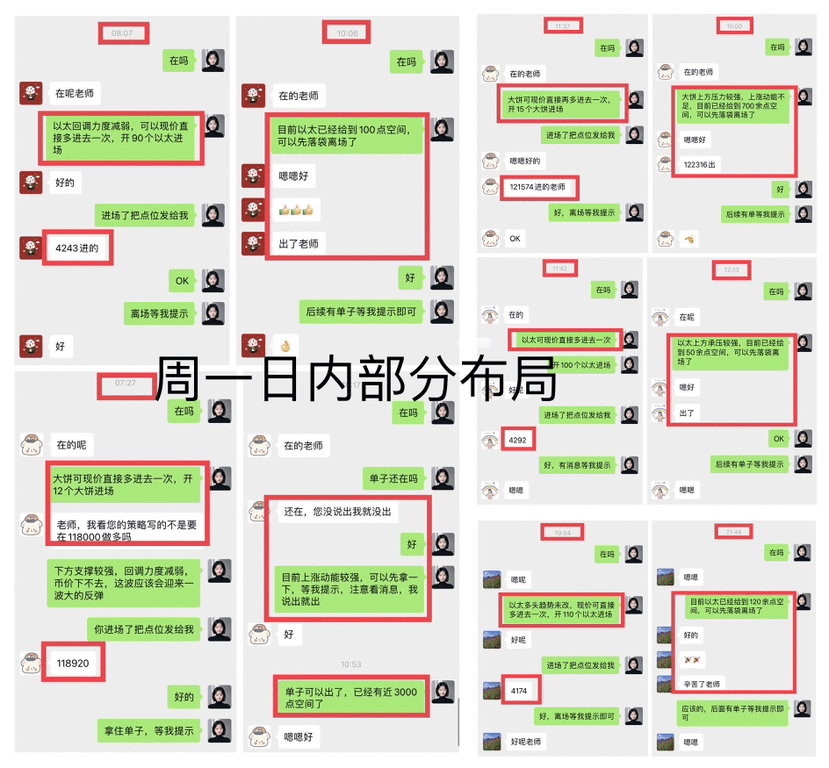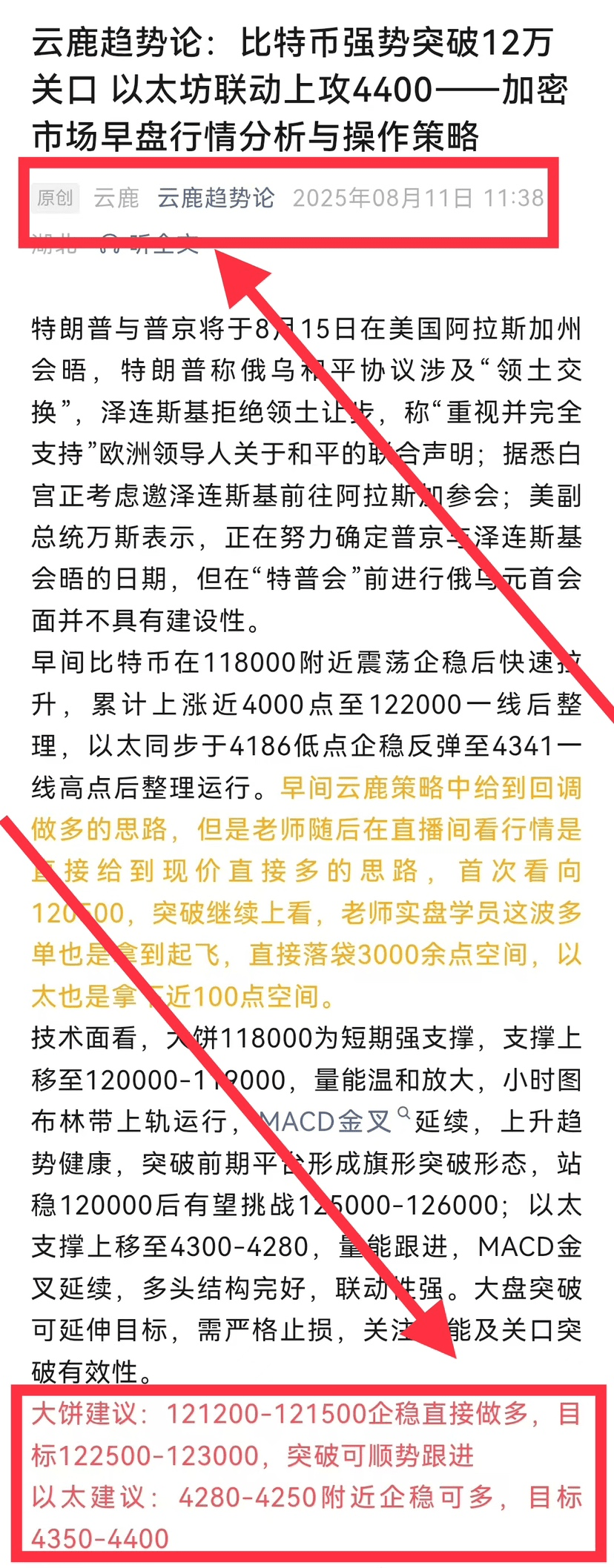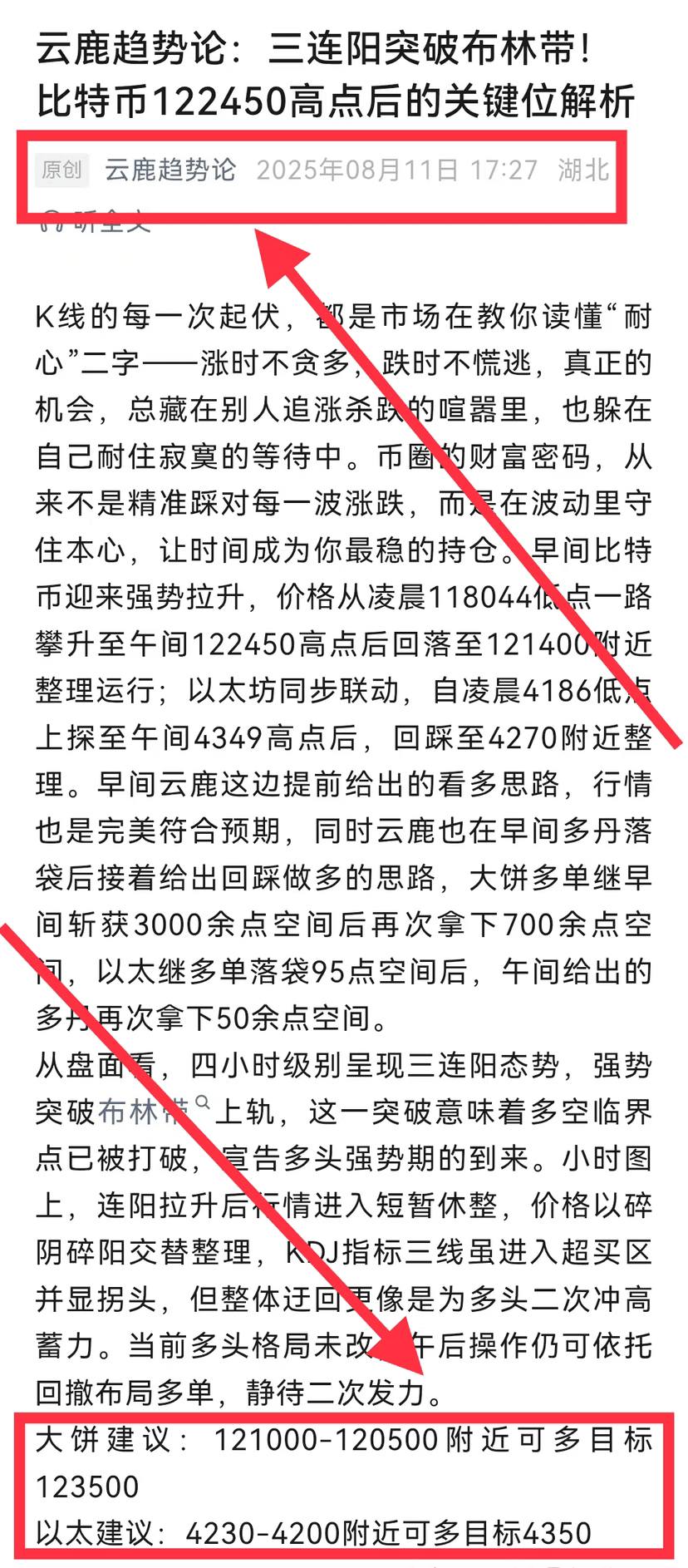$BTC Bitcoin surged and then fell back; a practical guide for those trapped to recover.
In the world of cryptocurrency trading, market fluctuations are like waves, sometimes surging up sharply, sometimes plummeting rapidly. Bitcoin's current price is 120139, having experienced a rise from 122308 to a drop to 118076 within 24 hours, leaving many traders trapped. Here, Yunlu shares recovery ideas for friends who are deeply trapped, helping everyone find a way to break through in a volatile market.
1. Clarify the market situation and position oneself in the trapped situation.
From the performance of K-lines and moving averages, the short-term MA5 (120985) and MA10 (121450) are turning down, and the price has broken below the moving average support, currently in an adjustment phase after a surge. Different levels of being trapped require different strategies:
Shallow recovery (recovery of 1 - 3 points): Entered the market due to chasing high near 122000 and failed to take profits in time, leading to profit reversal or even a small loss.
Deep trap (5 points or more): Either due to adding positions in the 121000 - 122000 range or not exiting at previous highs, suffering from a pullback.
2. Core recovery strategy: Adapt to the "trap" and operate precisely.
(1) Shallow self-rescue: Quickly capture rebounds, flexibly perform T trades or take profits.
If it is a shallow trap (such as entering at 121500 - 122000), one can operate at the right opportunity:
Proactively perform T trades (buy low and sell high): Pay attention to the MA10 moving average (121450). When the rebound encounters resistance at this moving average, sell about 30% of the position; wait for a pullback to the 120000 - 120500 range, then buy back to lower costs and lock in some profits.
Directly take profits/cut losses: For those with light positions who do not want to fuss, wait for the rebound to near the cost price (such as 121500) to clear positions and seek other trading opportunities.
(2) Deep trap breakthrough: Combine locking positions and DCA to lower costs.
Deep trap (cost above 122000) and not on the edge of liquidation can respond this way:
Locking positions and holding (position ≤ 50%, have patience): Do not cut losses for now, pay attention to whether the price can stabilize at MA30 moving average (119687) and 24h low (118076). If it does not effectively break below (3 consecutive hourly candles closing below 118000), it can be held. Wait for favorable news and a price rebound to the 121500 - 122000 range to gradually reduce positions by 20% - 30%, alleviating pressure.
DCA to lower costs (light positions, idle funds): Wait for the price to correct to the 119000 - 120000 range (close to the 24h low, relatively safe), use idle funds to add 10% - 20% of the position to lower the average cost, and subsequent rebounds to around 121500 are expected to recover.
(3) Edge of liquidation: Prioritize survival, protect the principal.
Those with high leverage, heavy positions, and accounts near the liquidation line need to first reduce or close positions to protect their principal. In leveraged trading, holding on will easily lead to liquidation, and although cutting positions is painful, it preserves capital for future trades. Once the market stabilizes (price stabilizes above the MA30 moving average and turns upward), one can re-enter the market.
3. Key positions for subsequent market movements: Signals for judging whether to stay or go.
After recovering from a position, continue to pay attention to the market to judge whether to hold or increase the position:
Short-term resistance level: MA10 moving average (121450) and previous high 122308. If the rebound breaks through MA10 and touches the previous high, market repair is expected, and one can add positions or hold; if the rebound encounters resistance at the moving average, reduce positions, as adjustments may not be over.
Medium-term support level: MA30 moving average (119687) and 24h low (118076). If the price falls to the support level and stabilizes, it is a good opportunity to add positions for a rebound; if it effectively breaks below the 24h low, the short-term will weaken, and it is advisable to wait for the 117000 - 118000 range before considering.
4. Mindset and operational taboos: Key to the long battle of recovery.
When recovering from a position, it is necessary to avoid two negative mindsets:
"Hold on for a double": Bitcoin is highly volatile, but not every time being trapped will result in a V-shaped reversal. Holding on during market weakness will deepen losses; one should adjust positions in time to preserve the principal.
"Panic-driven chaotic operations": Avoid cutting losses as soon as there is a drop or chasing highs as soon as there is a rise. Trading needs to plan buy and sell points and positions, operate according to the rhythm, and do not let emotions control you.
Recovering from Bitcoin trading is a game of skills and mindset. One must clarify the market situation, adapt to the conditions of being trapped, closely monitor key positions, and maintain a steady mindset. Market fluctuations are constant; keeping the principal and responding flexibly is crucial to finding profit opportunities in the cryptocurrency trading wave, achieving recovery and continuous profit goals.




